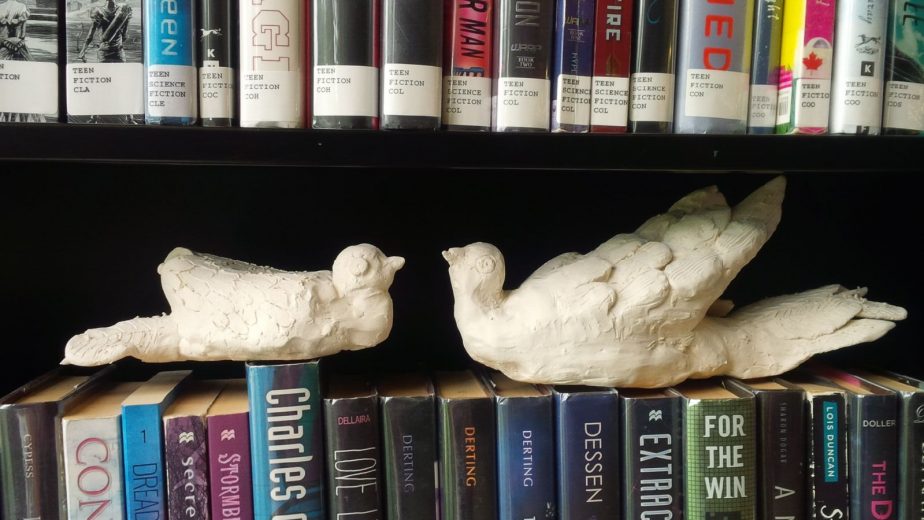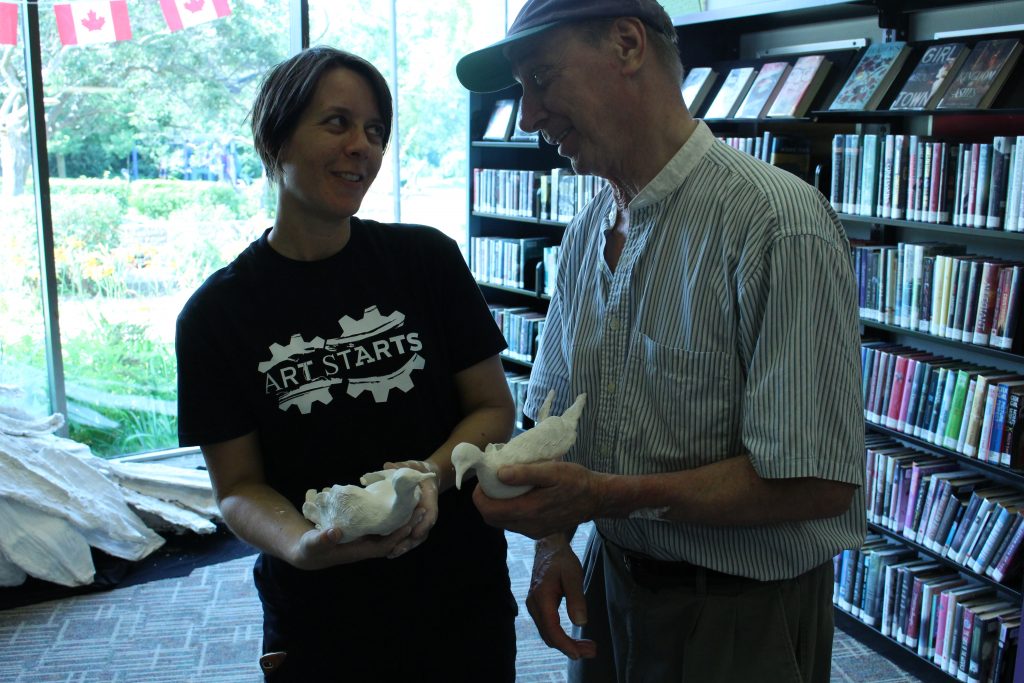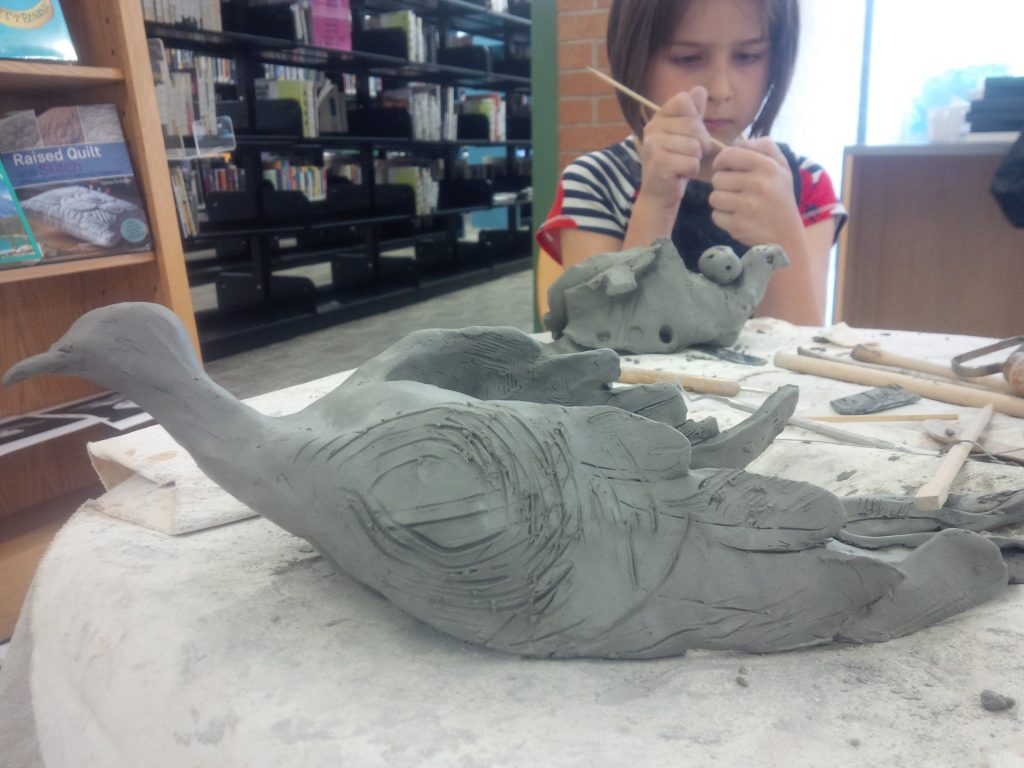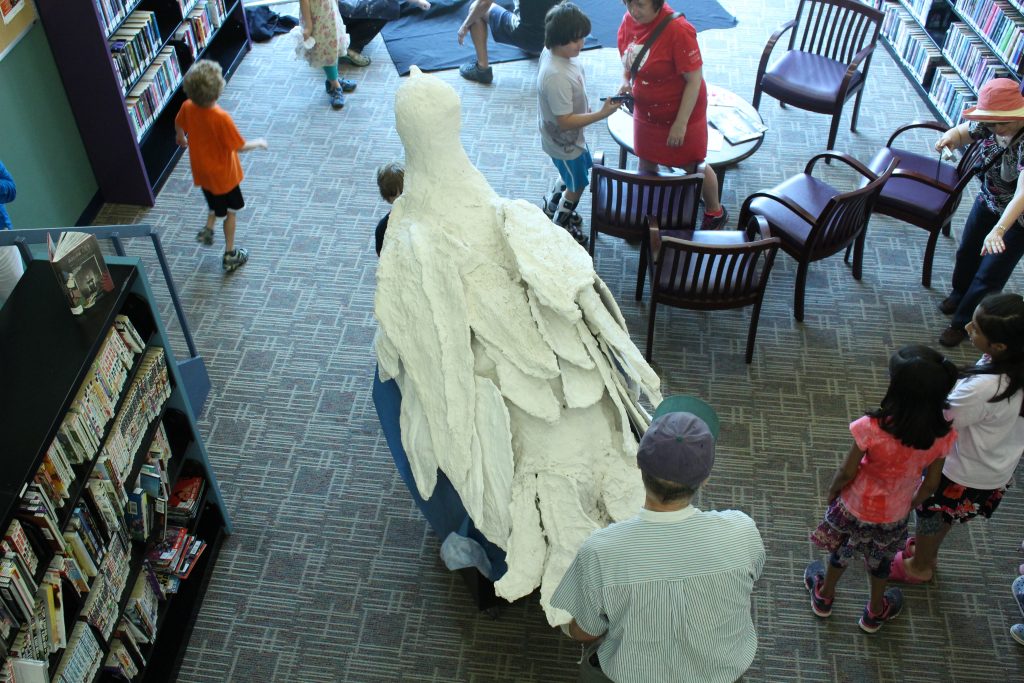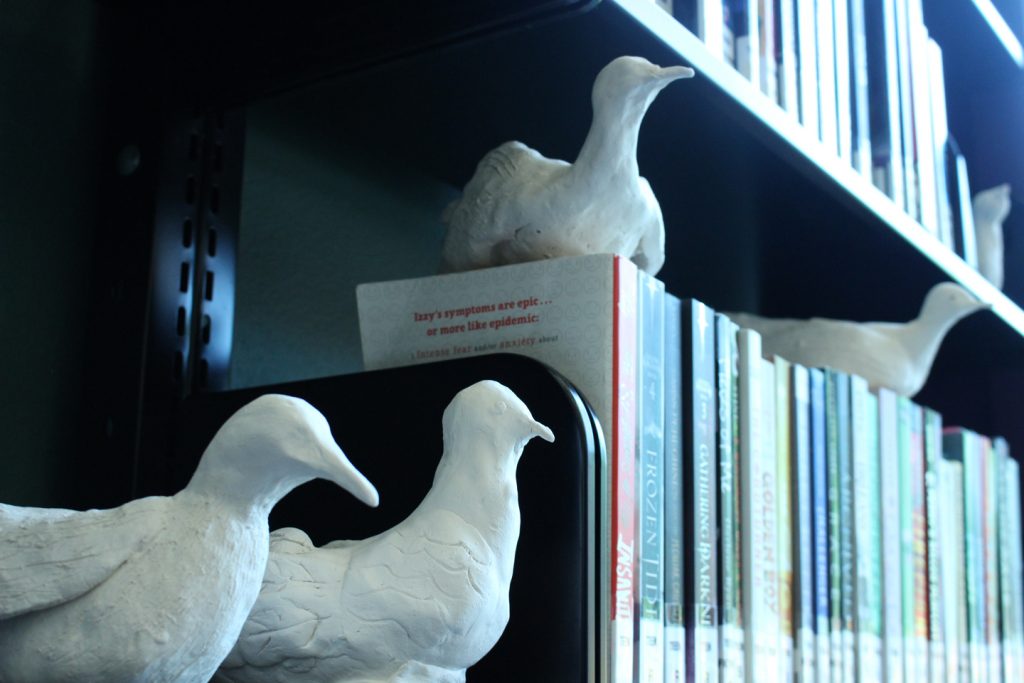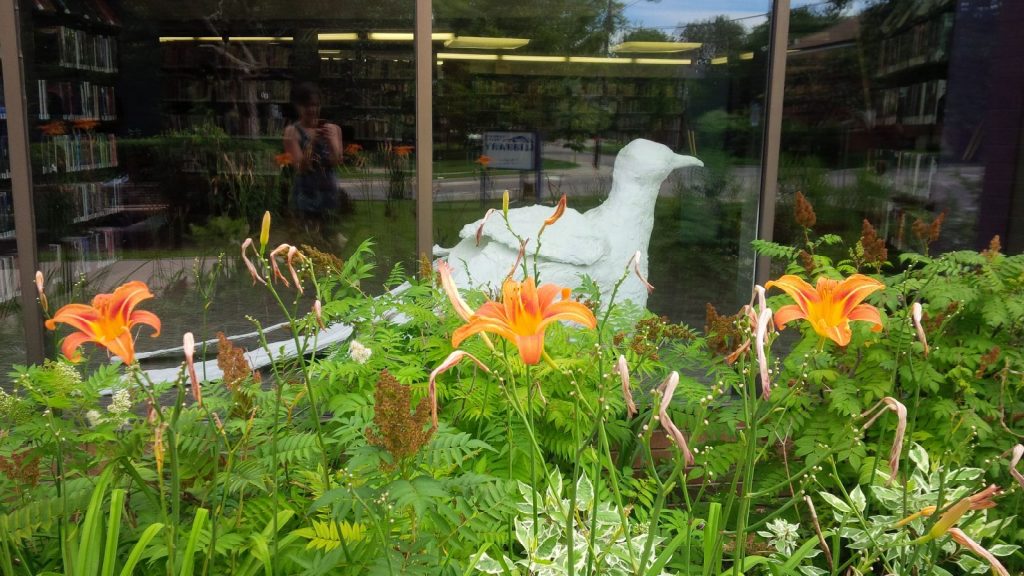
Mimico’s Lost Passenger Pigeon
The inspiration
Honouring a lost species and local indigenous history.
The Result
Art-making workshops in a local library and a public event.
The word “Mimico” is derived from an Ojibwe word meaning “abundant with wild pigeons”. Passenger Pigeons used to live in the Mimico area on the shores of Lake Ontario. Once the most abundant bird in North America, they are now extinct. I wanted to make an art project honouring this history.
A Community Maker Space for Clay
I wanted to make an art project honouring this history. Partnering with the Mimico Library, we transformed a rec room at the library into a sculpture studio. We set bi-weekly sculpture sculpture workshops for four weeks.
Platform
One month residency at Mimico library
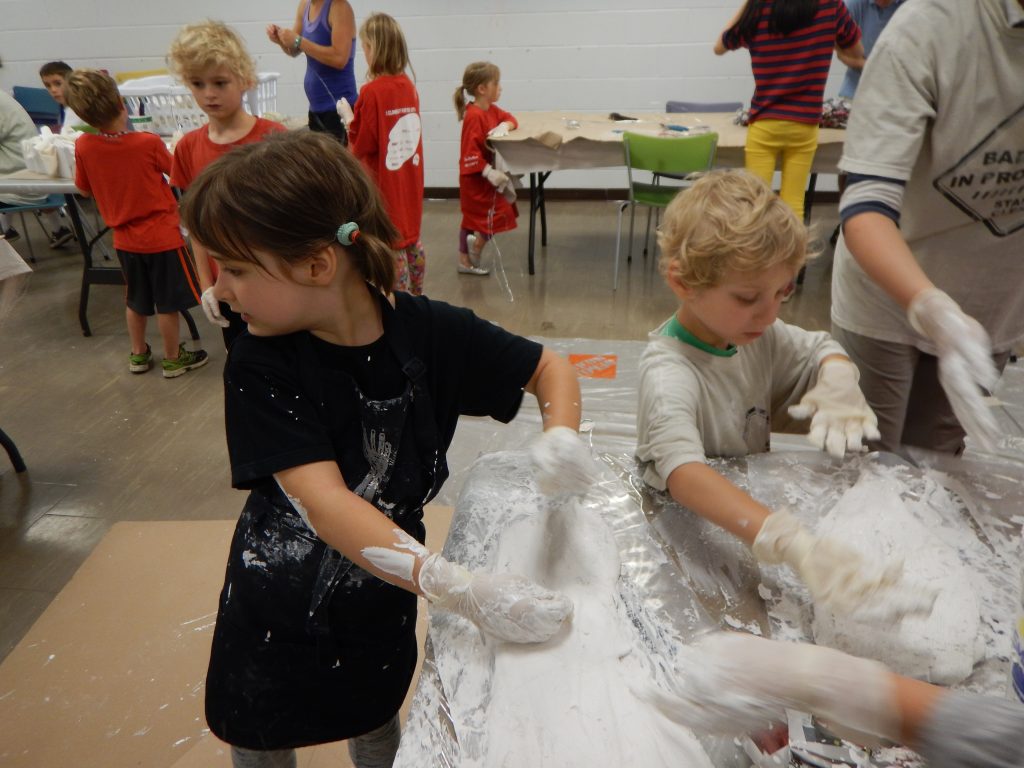
Sculpting Clay Pigeons
Participants learned how to work with wire and plaster. Collectively, we worked on sketches, the armature, and mixed plaster to replicate a large-scale pigeon. Participants also made 40 smaller clay pigeons.
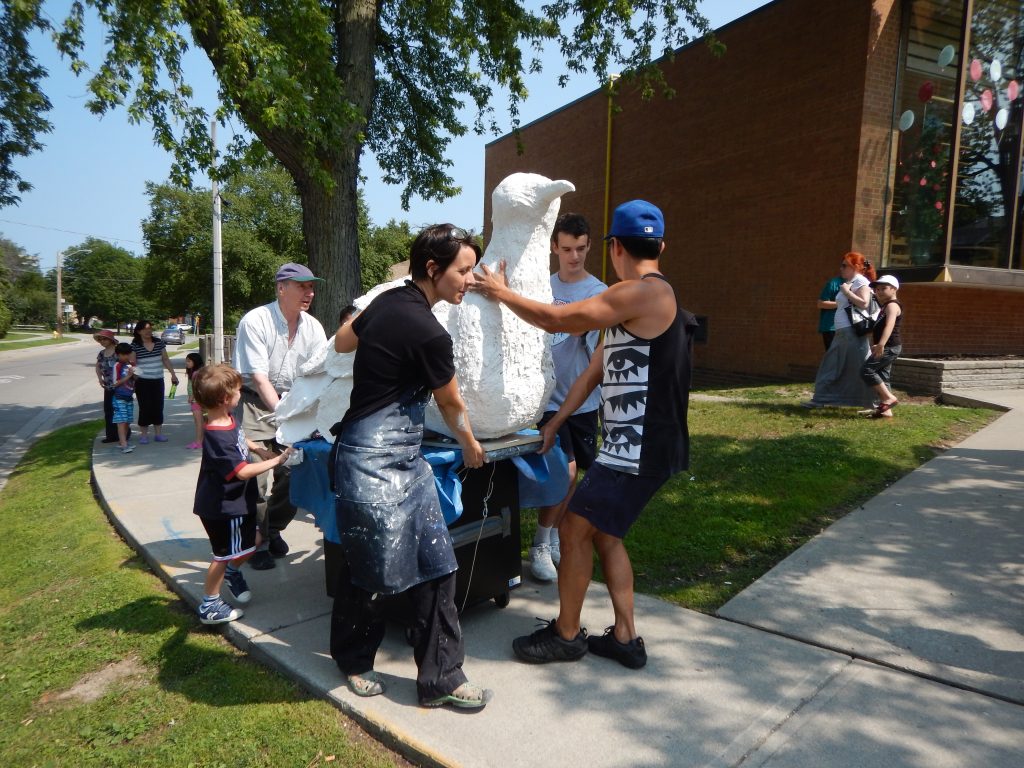
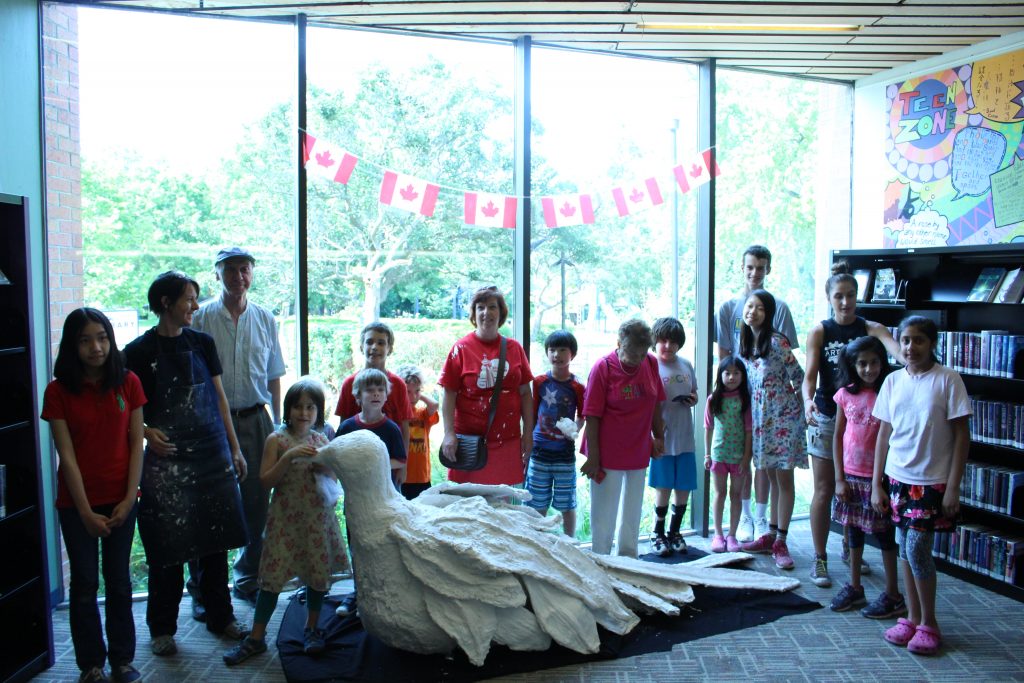
New Pigeons for Mimico
On the final unveiling day, we carried the large pigeon sculpture to a large window inside the library. Participants took home the 40 small clay pigeons. Library staff made a shelf for the project with pigeon-themed books borrowed from libraries across the city.
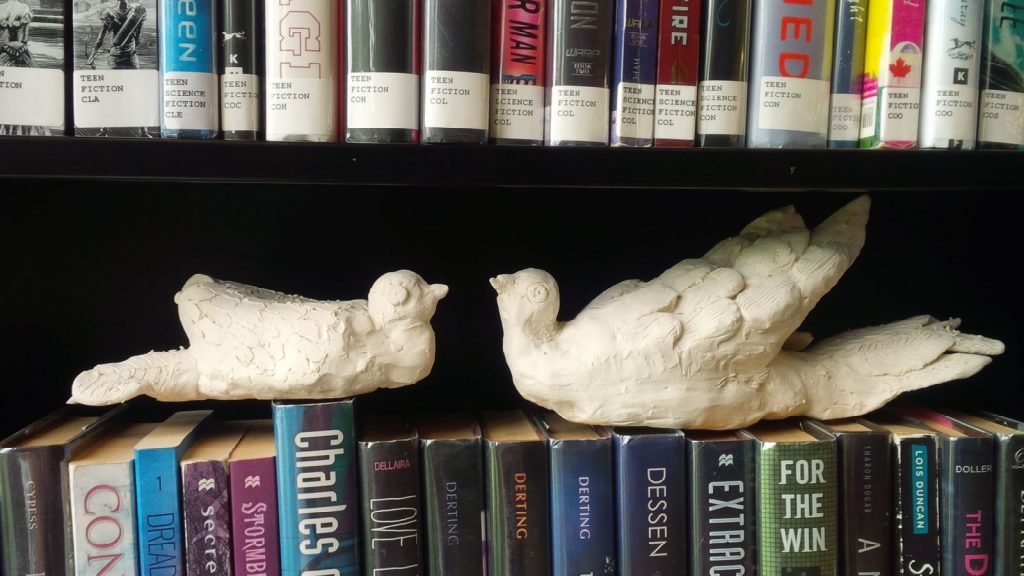
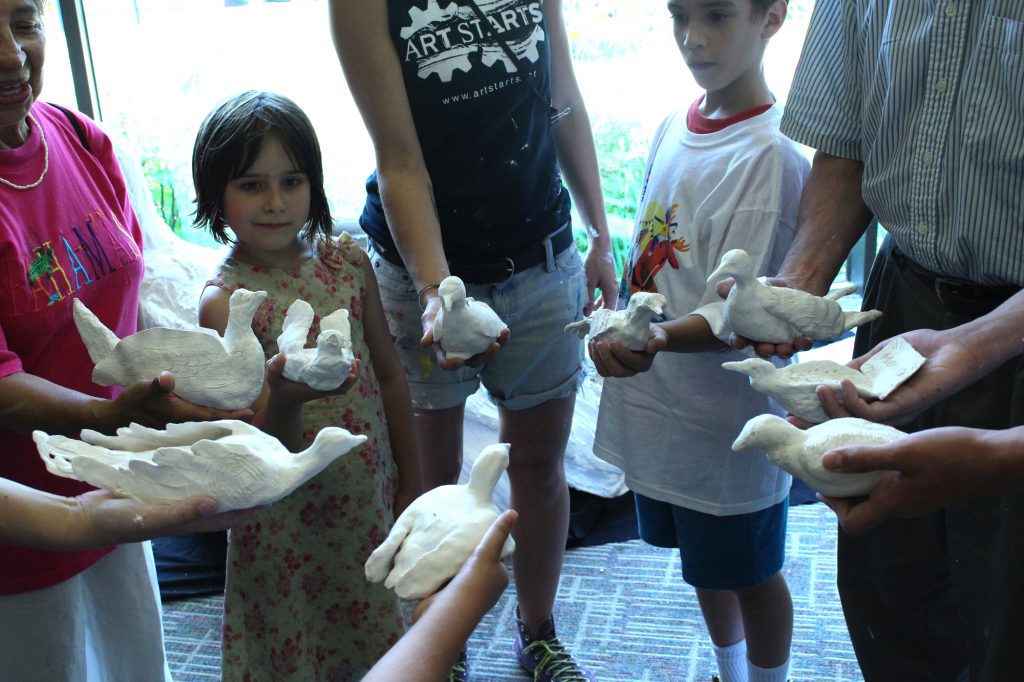
My Role
Program Curator, community outreach, lead artist
Supported by
Art Starts Grant
Location
Mimico Library
Tools
Clay, wire, plaster, reclaimed cloth and found objects from the shores of Lake Ontario.
Participants
Children, youth, parents, elders, visitors to Mimico Library
Dates
July 2017
A Communal Effort
As participants learned about the past and the need to protect currently endangered species, they were moved by the story and that showed in the intricacy of their sculptures.This project touched on urgent themes including our first nations’ history, extinction, reuse of found objects and humans’ impact on our environment.
The project was intergenerational, seniors worked alongside children and youth. Most participants never touched clay and plaster before and they had the freedom to explore the materials and to make their own creative decisions.
